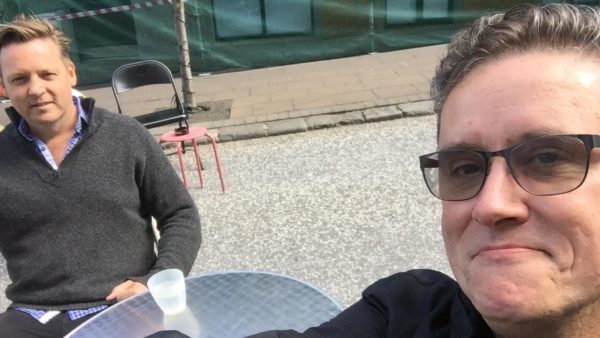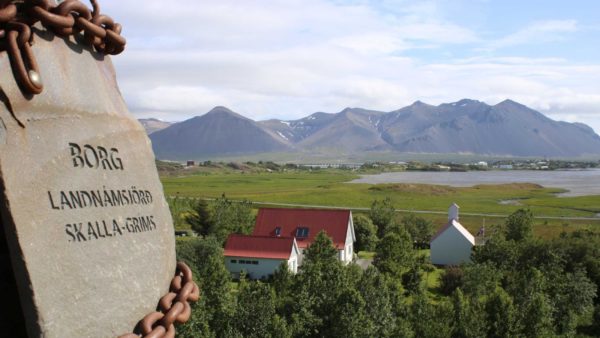What piece of audio has had the most profound effect on you – as a listener?
I think it was the Radiolab story on Lucy the chimpanzee. Lucy was adopted at birth by the Temerlins, a psychotherapist and a social worker couple who brought her up like a little girl – encouraging her to socialise with their friends and to eat at the dinner table. Lucy learned to communicate with sign language, drink gin and make cups of tea. When she grew older and became more physically powerful, the Temerlins sent her to a chimp rehabilitation centre in Gambia, accompanied by a psychology graduate student who ended up staying at the centre for years.
Jad Abumrad and the Radiolab team used music and layered voices to propel the story forward and to gradually shift the tone. The story ends up so far from where it started that it feels like the journey of a thousand miles, leaving me, as a listener, full of wonder. I was so overcome I was fighting for self control while listening to it on public transport.
Where did the idea for Saga Land come from?
My friend Kári Gíslason and I made Saga Land – a four-part series – for Radio National’s Earshot programme. The idea came from a conversation with Kári, who is an author and an academic born in Iceland.
Kári loves the sagas of Iceland, the stories of the first Viking families who settled on the island in the Middle Ages. The sagas are true stories of a people trying to survive on a dangerous island on the rim of the Arctic Circle, while still operating under the Viking code of honour. Kári thinks these are the greatest stories ever written, and I’m inclined to agree with him. He tells them beautifully and compellingly, almost like a performance.
When he told me the story of Gunnar and Hallgerd from The Story of Burnt Njal, I was struck straight away by its potential for radio, and particularly as a podcast – the intimacy of the format is perfectly suited to old stories, honed by centuries of oral tradition.
We hit upon an idea to record some saga stories in the same locations where they unfolded a thousand years ago – in the farms, streams and fjords of Iceland. There was also a mystery surrounding Kári’s ancestry we wanted to investigate.

What was your favourite part of making the series?
Aside from the recording process, conducted in the wilds of Iceland, I most enjoyed colouring the narrative with music and ambient sounds from the landscape – the rain, the wind through the long grass, the strange birdsong, water lapping on a beach.
What was the hardest part of producing it?
We had four saga stories to tell in four half-hour episodes. Two of them presented no difficulty; the other two required plenty of thought and re-structuring to make them flow as a single, elegant stream of narrative.
Radio is much more linear than literature.
The sagas often begin with a complex web of family relationships before the engine of the story kicks in. This can’t be ignored: you really do need to know who’s married to whom, who is the sister or foster-father of someone else, for the story to make sense.
But radio is much more linear than literature; you can’t expect the listener to go back a few pages and remind themselves that Gisli is the brother of Thorkel, who is married to Thorgrim, who hates Vestein, who is actually Gisli’s best friend.
So we had to find ways to gently establish those relationships in the course of the narrative without drawing attention to it.

What’s the best thing about working with sound?
So many things:
• Unlike TV, we as listeners aren’t distracted by appearances, and so our prejudices are suspended. This can create all kinds of shared sympathies between people who would normally never encounter one another. Living as we do through a protracted and endlessly boring culture war, this is of no small benefit. My impression from working on my daily show Conversations is that there’s a huge public appetite for connection with otherness. Public radio is a particularly good medium for making these connections.
• Audio allows so much narrative scope, allowing the creator to be as epic or as intimate as we like. Radio allows creators to describe something like the first 15 seconds of the birth of the universe more compellingly than any visual medium. Conversely, it also affords you the room to talk about the tiniest and silliest things.
• There’s room in radio/podcasts for silence. On Conversations, we find that moments of silence can be so full of beauty, awe and tension.
• Creating music and layering it into the narrative, along with ambient sound, is particularly pleasurable – an experience very much like making a studio album.
What’s the best (or worst) advice you’ve received about radio?
Worst: ‘No interview should last longer than seven minutes.’
Unlike TV, we as listeners aren’t distracted by appearances, and so our prejudices are suspended.
Best: Avoid clichés like the plague (see what I did just there?). Avoid adjectives wherever possible. Cut away any language that frames the subject and just tell the story as naturally and directly as possible.
What has been your biggest lesson as a producer so far?
I’ve only acted as a producer once, on Saga Land, it was a huge challenge and made me even more appreciative of the work my (Conversations) producers do. So the lesson was: get someone better than me to do the job.
Do you interact with your audience, or receive feedback or criticism about your work?
Yes, through social media and through public appearances. The best feedback comes from my Conversations producers Pam and Michelle – I act on their advice around 95% of the time.
If you could go out to dinner with any audio maker, who would it be – and what would you talk about?
I think Australian audio arrived at a natural, colloquial voice well before the other major public broadcasters.
It would be with Mike Duncan, who made the outstanding History of Rome podcast, and who currently makes Revolutions. Mike Duncan reignited my interest in Roman history, which continued on to the eastern Roman empire, also known as Byzantium, which led me to write a book about it. Mike knows and loves US history as well; another passion of mine.
What are you listening to at the moment?
• This American Life: So consistently wonderful. I interviewed Ira Glass a few years ago in the TAL studios and I was delighted to discover all kinds of shared sympathies and a similar approach to the aesthetics of radio.
• The New Yorker Fiction Podcast: Such a simple, elegant format, and Deborah Treisman is a wonderful interviewer.
• Sami Shah’s Islamic Republic of Australia (an Earshot mini-series): Hilarious and enlightening. Sami is a natural, and should be allowed to do whatever he wants at Radio National. I love the smartarse title too.
• Note to Self: Manoush Zomorodi’s show on technology is so clever, funny and innovative it makes me want to work much, much harder than I already do, which would kill me. It was such a pleasure to meet Manoush in Sydney at OzPod 2016.
• Mike Duncan’s post-History of Rome series: It follows the history of revolutions in England, America, France and Haiti so far. I can only hope and assume Russia and China are to come.
• The Minefield: Scott Stephens and Waleed Aly hurl themselves at some of the pesky ethical questions that arise in contemporary life.
What’s your favourite Australian podcast, and why?
The Minefield. Scott Stephens is a friend and colleague, and I admire Waleed Aly enormously (how many other public intellectuals have won a Gold Logie?). This show is always diverting, provocative, fun and occasionally infuriating, like all good shows should be.
What do you think is unique about Australian audio?
I think Australian audio arrived at a natural, colloquial voice well before the other major public broadcasters. The BBC and much of American public radio still cling to that slightly stilted, detached style of presentation that can be mistaken for erudition. Australia, led primarily by ABC RN, grasped the potential of podcasting very early in the game.
What’s next for you as a producer?
I shall happily go back to my day job as a presenter/writer on Conversations, and leave the producing to cleverer people than me.